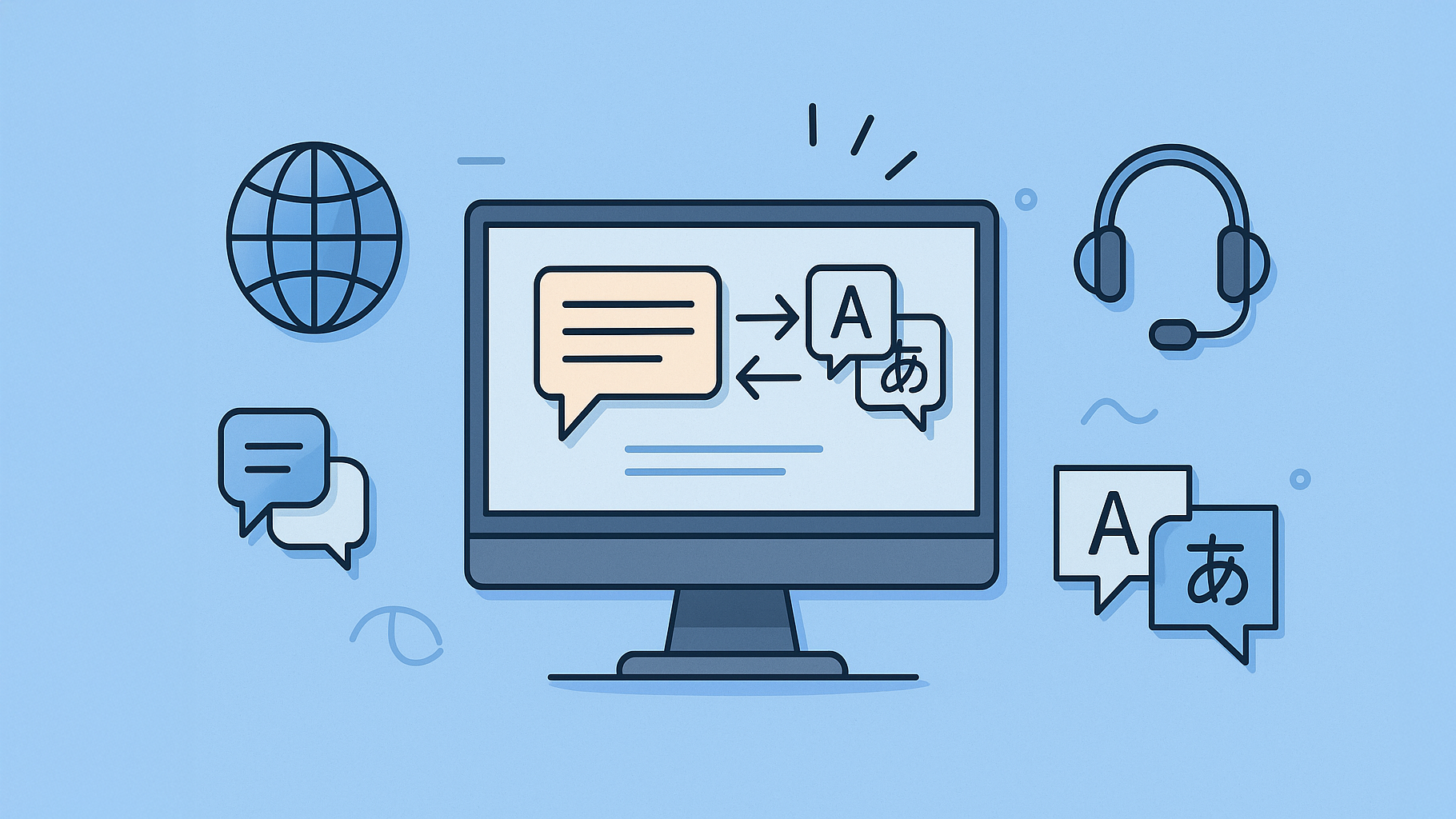In today’s fast-paced business environment, an efficient service desk is the backbone of any successful organization. It’s no longer just about fixing technical glitches; it’s about delivering seamless, intelligent, and proactive support that enhances productivity and drives business value. As user expectations rise and IT environments grow more complex, adopting a structured approach grounded in proven service desk best practices is crucial for staying ahead. Moving beyond generic advice, this guide provides a comprehensive roundup of actionable strategies that leading organizations are implementing today.
This article details the top strategies for transforming your support operations. We will explore how to build a world-class service desk that not only resolves issues but also delights users and anticipates future needs. You will gain a clear understanding of how to implement these concepts effectively within your own team.
Here’s what we will cover:
- Practical Implementation: Concrete steps for applying frameworks like ITIL and establishing clear Service Level Agreements (SLAs).
- Actionable Techniques: Methods for creating a comprehensive knowledge base, implementing multi-channel support, and focusing on First Call Resolution (FCR).
- Modern Tools: Insights on leveraging automation, AI, and robust reporting systems to optimize performance.
- Real-World Scenarios: Examples that illustrate how these practices work in a live operational setting.
By the end of this listicle, you will have a detailed roadmap for refining your processes, empowering your agents, and demonstrating the strategic importance of your service desk. Each point is designed to provide you with the specific knowledge needed to foster a culture of continuous improvement and exceptional service delivery.
1. Implement ITIL Framework for Service Management
The Information Technology Infrastructure Library (ITIL) is a globally recognized framework of best practices for delivering IT services. It provides a structured approach to IT Service Management (ITSM) that aligns IT processes with business objectives, ensuring services are consistent, reliable, and valuable. Implementing the ITIL framework is a cornerstone of modern service desk best practices because it transforms the service desk from a reactive firefighting unit into a strategic business partner.
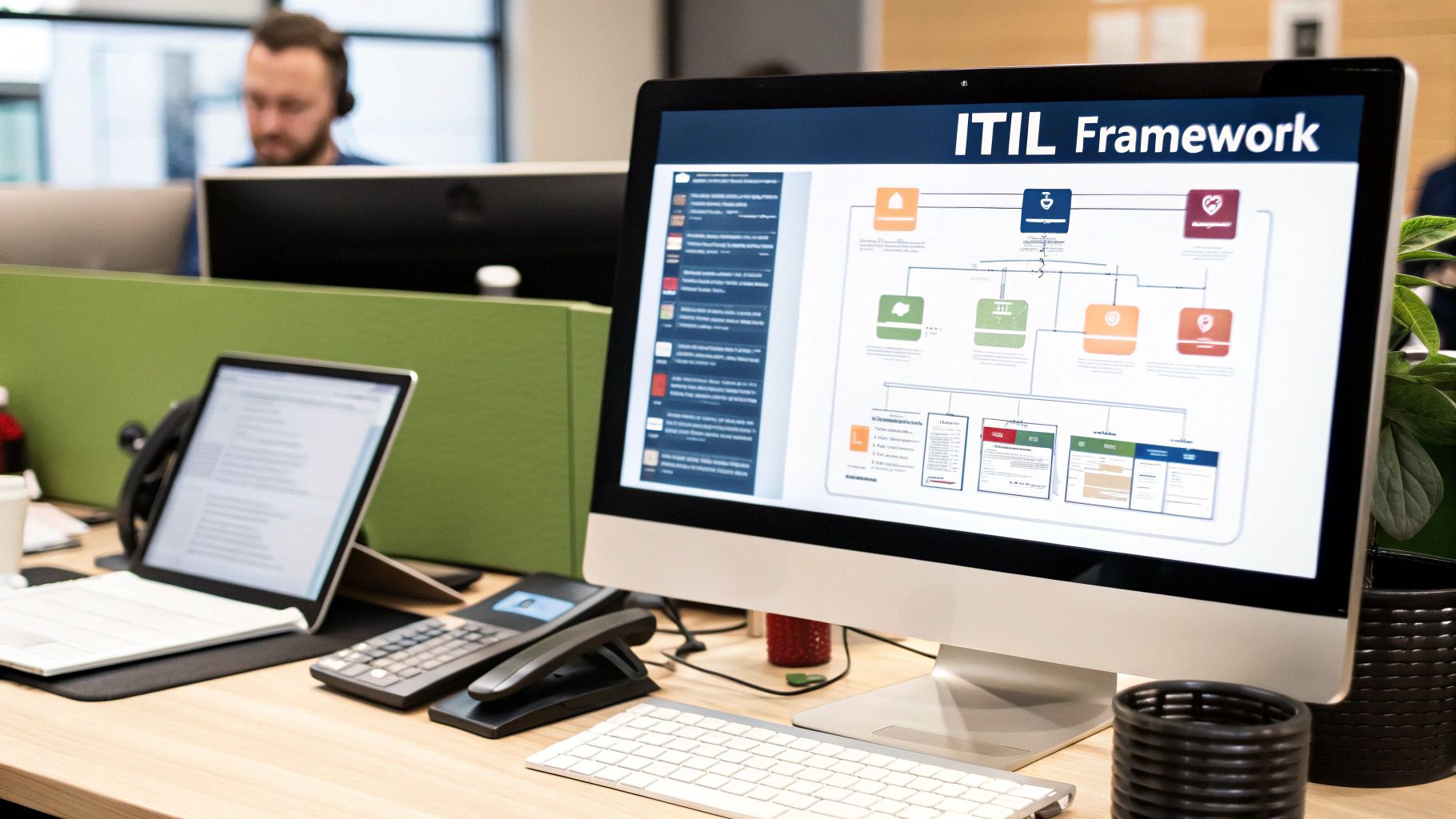
This framework is not just a set of rules; it is a comprehensive service value system that guides organizations through the entire lifecycle of a service, from conception to retirement. By standardizing procedures for incident, problem, change, and service level management, ITIL creates predictable outcomes and enhances operational efficiency.
Why ITIL is a Top Service Desk Practice
Adopting ITIL helps organizations systematically manage risks, strengthen customer relations, and establish cost-effective practices. For example, IBM utilized ITIL principles across its global operations and reported a 40% reduction in incident resolution time. Similarly, Microsoft leverages ITIL for its Azure cloud services support, demonstrating its scalability and effectiveness in complex, high-stakes environments. These examples show how ITIL provides a proven roadmap to service excellence.
Actionable Implementation Tips
A full ITIL rollout can be complex, so a phased approach is crucial for success.
- Start with Core Processes: Begin by implementing foundational ITIL processes like Incident Management and Change Management. These offer immediate benefits by stabilizing your IT environment and improving response times.
- Customize to Fit: ITIL is a framework, not a rigid standard. Adapt its practices to align with your organization’s specific size, culture, and business needs.
- Invest in Training: Proper training is essential. Ensure your service desk staff understands not just the “how” but the “why” behind ITIL processes. Certified training from providers like Pink Elephant can build critical expertise.
- Measure and Communicate: Use key performance indicators (KPIs) to track the impact of your ITIL implementation. Metrics like first-call resolution rates and service availability will help demonstrate value to stakeholders.
2. Establish Clear Service Level Agreements (SLAs)
Service Level Agreements (SLAs) are formal commitments between a service provider and a customer, defining the expected level of service. They serve as a contract that sets clear expectations and provides measurable targets for service delivery, including response times, resolution times, availability targets, and quality metrics. Establishing well-defined SLAs is a fundamental service desk best practice because it moves service delivery from a “best effort” basis to a predictable, measurable, and accountable function.
These agreements are the backbone of a high-performing service desk, providing the benchmarks against which performance is measured. By formalizing service commitments, SLAs build trust with users, justify resource allocation, and drive a culture of continuous improvement, as the team is focused on meeting and exceeding defined targets.
Why SLAs are a Top Service Desk Practice
SLAs provide objective criteria for evaluating service quality and help prioritize incoming requests based on business impact. For instance, Amazon Web Services (AWS) famously guarantees 99.99% uptime for many services, offering service credits if they fail to meet this commitment. Similarly, Salesforce offers tiered SLAs based on subscription levels, with response times for critical issues ranging from 1 hour for its premium Signature plan to 2 business days for a Standard plan. These examples demonstrate how SLAs manage customer expectations and underscore a commitment to service reliability.
Actionable Implementation Tips
Implementing effective SLAs requires careful planning and continuous management to remain relevant and fair.
- Set Realistic Targets: Base SLA metrics on historical performance data and available resources. Setting unattainable goals leads to frustration and a perception of failure, while achievable targets motivate the team.
- Include Business and Technical Metrics: Go beyond just technical uptime. Include business-oriented metrics like user satisfaction scores and first-call resolution rates to provide a holistic view of service quality.
- Review and Update Regularly: Business needs and IT capabilities change. Review your SLAs at least annually, or after significant business changes, to ensure they remain aligned with stakeholder expectations.
- Communicate Clearly: Ensure all stakeholders, from end-users to IT staff, understand what the SLAs are and what they mean. Clear communication prevents misunderstandings and manages expectations effectively. To dig deeper, you can learn more about SLA monitoring strategies at resolution.de.
3. Create and Maintain a Comprehensive Knowledge Base
A knowledge base is a centralized, self-service repository of information, procedures, and troubleshooting guides. It empowers both end-users and service desk agents to find solutions independently, reducing ticket volume and resolution times. Implementing a robust knowledge base is one of the most impactful service desk best practices because it shifts focus from repetitive, low-level queries to more complex problem-solving.
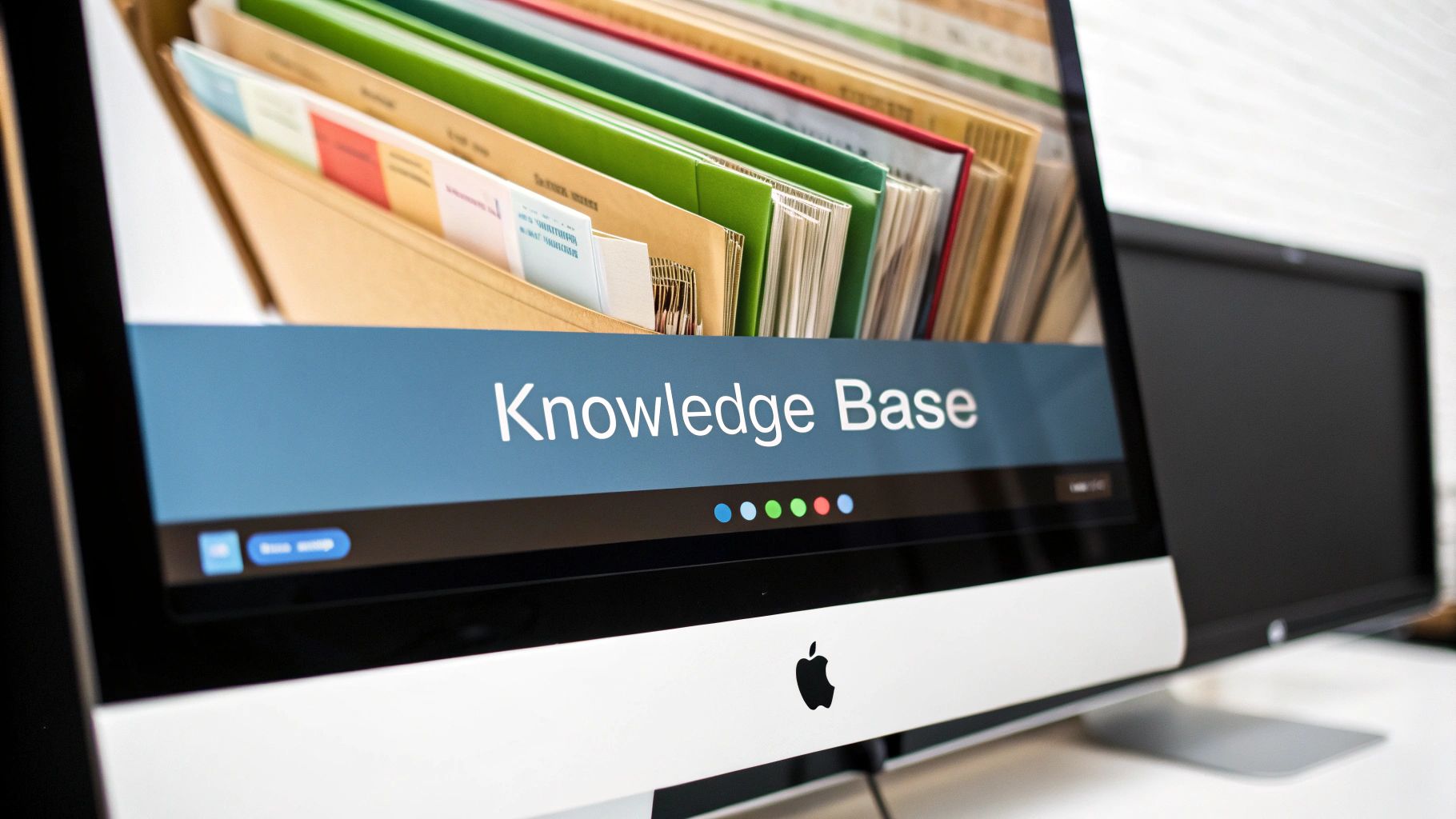
This digital library of institutional knowledge ensures that valuable information isn’t lost when an experienced agent leaves. It standardizes responses, promotes consistency in support, and is a foundational element for enabling self-service and improving overall operational efficiency.
Why a Knowledge Base is a Top Service Desk Practice
A well-maintained knowledge base directly improves key metrics like first-call resolution (FCR) and reduces the cost per ticket. For instance, Atlassian uses its own product, Confluence, to power its internal and external knowledge bases, enabling thousands of teams to share information seamlessly. Another excellent example is Zendesk Guide, which allows organizations to build integrated help centers that serve both customers and agents, significantly deflecting ticket creation. These tools demonstrate the power of accessible, organized knowledge.
Actionable Implementation Tips
Building an effective knowledge base is an ongoing process, not a one-time project. For more insights, you can learn more about building a knowledge base on resolution.de.
- Implement Content Ownership: Assign subject matter experts (SMEs) to specific articles and establish regular review cycles to ensure accuracy and relevance.
- Use Analytics to Guide Content: Analyze search queries and ticket data to identify knowledge gaps. Prioritize creating articles for the most common and repetitive issues.
- Make Content Creation Easy: Use templates and streamlined workflows to encourage agents and SMEs to contribute knowledge without administrative friction.
- Incorporate Multimedia: Enhance articles with screenshots, GIFs, and short video tutorials to make complex instructions easier to follow.
- Prune Regularly: Just as important as adding content is removing it. Archive or delete outdated, inaccurate, or duplicate articles to keep the knowledge base trustworthy and easy to navigate.
4. Implement Multi-Channel Support Strategy
A multi-channel support strategy provides customers with various ways to contact the service desk, including phone, email, live chat, web portals, mobile apps, and even social media. This approach meets users where they are, accommodating different communication preferences and levels of urgency. Implementing a robust multi-channel strategy is a critical service desk best practice because it enhances accessibility and improves the overall user experience by offering choice and convenience.
This strategy moves beyond a single point of contact, recognizing that a user’s preferred communication method may depend on the complexity of their issue or their current context. By integrating these channels, an organization ensures a consistent and seamless support journey, regardless of how a user chooses to engage.
Why a Multi-Channel Strategy is a Top Service Desk Practice
Adopting a multi-channel approach significantly boosts user satisfaction and operational efficiency. For instance, Apple Support excels by offering phone, chat, in-store appointments, and community forums, allowing users to select the most suitable channel for their needs. Similarly, Microsoft provides support across a unified platform, ensuring that a case started via web portal can be seamlessly followed up via phone call. This demonstrates how a well-executed strategy reduces user effort and resolves issues faster.
Actionable Implementation Tips
Rolling out a multi-channel system requires careful planning to ensure quality and consistency across all touchpoints.
- Analyze User Preferences: Start by understanding how your users prefer to communicate. Use surveys and analyze existing ticket data to identify the most valuable channels to implement first.
- Ensure Seamless Handoffs: The experience must be cohesive. Implement a system that allows agents to view a user’s entire interaction history across all channels, preventing users from having to repeat themselves.
- Train Agents on Channel-Specific Etiquette: Communication styles differ between channels. Train agents on best practices for live chat (concise and quick) versus email (detailed and formal).
- Monitor and Optimize Performance: Regularly track KPIs for each channel, such as response time, resolution rate, and customer satisfaction (CSAT) scores. Use this data to reallocate resources and refine your strategy.
5. Utilize Ticket Prioritization and Categorization Systems
Effective ticket management is the backbone of an efficient service desk. It involves systematically categorizing, prioritizing, and routing support requests based on their impact, urgency, and complexity. This structured approach is a core service desk best practice because it ensures that critical issues receive immediate attention while maintaining a balanced and efficient workflow distribution across the team, preventing agent burnout and improving service delivery.
Without a formal system, service desks often operate on a “loudest voice” or “first-in, first-out” basis, which can lead to business-critical issues being neglected. Implementing a robust categorization and prioritization matrix transforms this chaos into a controlled, predictable process, aligning the service desk’s efforts with business priorities.
Why Prioritization and Categorization are Top Service Desk Practices
A well-defined system for handling tickets prevents high-impact issues from falling through the cracks and optimizes resource allocation. For example, JIRA Service Management uses customizable priority schemes and automation rules to sort incoming requests, while ServiceNow employs an impact/urgency matrix to automatically assign a priority level. These tools demonstrate how technology can enforce consistency and ensure that every ticket is addressed according to its true importance to the business. This systemic approach is fundamental to managing service levels effectively.
The following decision tree visualizes a common method for assigning ticket priority based on impact and urgency.
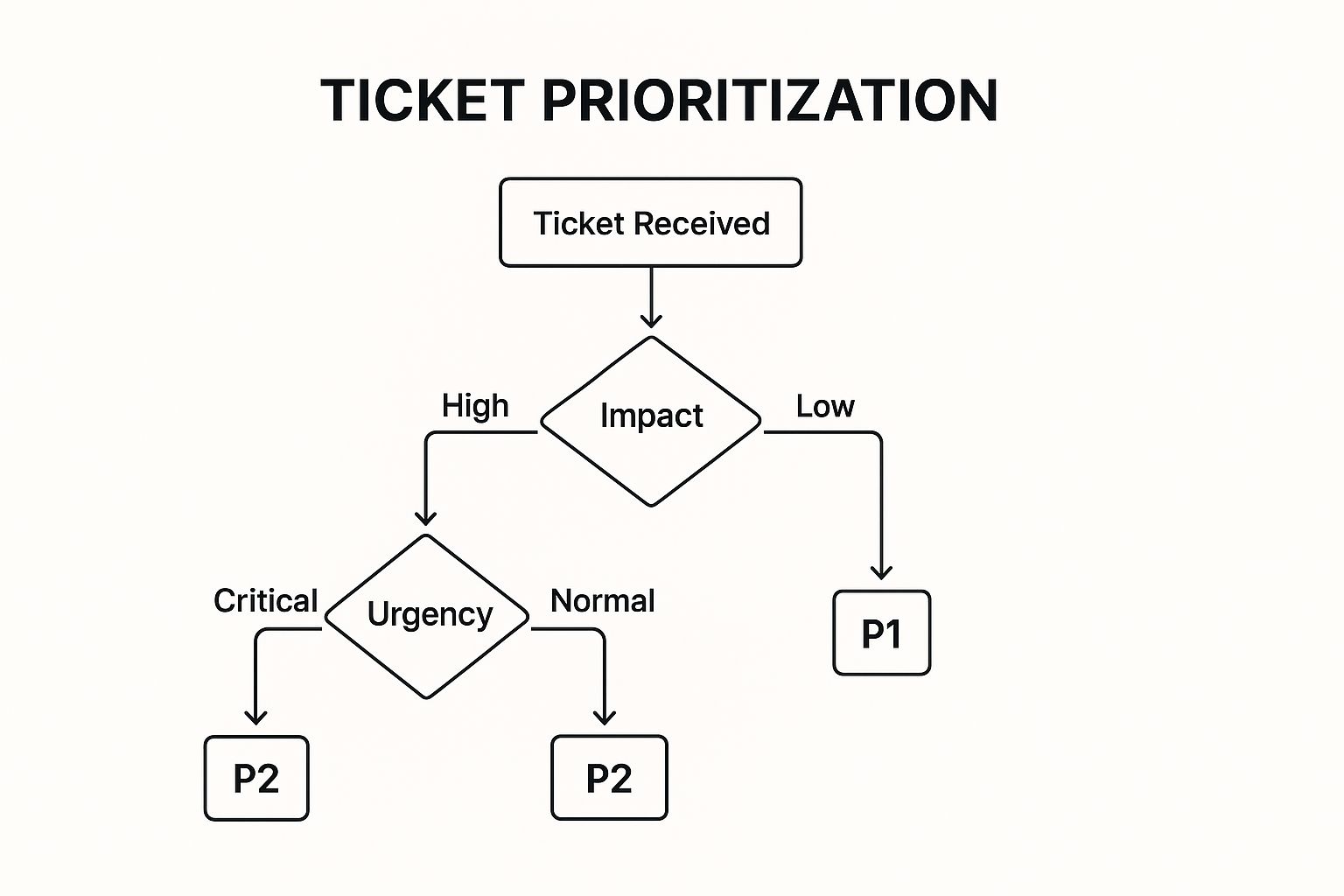
This model illustrates how combining impact and urgency creates a clear, logical path to assigning a priority level, removing guesswork from the process.
Actionable Implementation Tips
A successful system requires clear definitions and consistent application.
- Define Clear Criteria: Create and document a priority matrix that defines what constitutes high, medium, and low levels of impact and urgency. Communicate these definitions to both end-users and service desk staff to manage expectations.
- Leverage Automation: Use your ITSM tool’s capabilities to automate categorization and priority assignment based on ticket details like keywords, user group, or affected CI. This reduces manual errors and saves valuable agent time.
- Implement Approval Workflows: For P1 (highest priority) requests, establish an approval workflow to confirm the issue’s impact before mobilizing significant resources. A well-defined issue escalation process on resolution.de is essential for handling these critical events.
- Review and Refine: Regularly analyze ticket data to identify trends. Review and adjust your categories and priority levels as your business services evolve to ensure the system remains relevant and effective.
6. Focus on First Call Resolution (FCR)
First Call Resolution (FCR) is the practice of completely resolving a customer’s issue during their very first contact with the service desk. This means no callbacks, no transfers, and no follow-up interactions are needed. Measuring and optimizing for FCR is one of the most impactful service desk best practices because it directly correlates with both customer satisfaction and operational efficiency, reducing the overall volume of support tickets.
When an agent is empowered and equipped to solve an issue on the spot, it creates a positive experience for the end-user and frees up service desk resources. A high FCR rate signifies that agents have the right knowledge, tools, and authority to do their jobs effectively, turning a potentially frustrating support call into a swift and satisfying resolution.
Why FCR is a Top Service Desk Practice
A strong focus on FCR boosts customer loyalty and significantly lowers operational costs by minimizing repeat calls. For instance, online retailer Zappos is famous for its customer service, achieving a high FCR rate by empowering agents to go the extra mile without strict scripts or time limits. Similarly, American Express invests heavily in comprehensive training to ensure its support staff can handle a wide array of complex inquiries during the initial contact, leading to industry-leading customer satisfaction scores.
Actionable Implementation Tips
Improving FCR requires a strategic investment in your agents and the tools they use. A rushed or low-quality first interaction is worse than no resolution at all.
- Empower Your Agents: Provide agents with the necessary system access, permissions, and decision-making authority to solve common issues without needing to escalate.
- Invest in a Knowledge Base: A robust and easily searchable knowledge base gives agents instant access to troubleshooting guides, previous solutions, and procedural documents.
- Consolidate Agent Tools: Implement a unified desktop interface or ITSM platform that integrates various systems. This prevents agents from wasting time switching between multiple applications to find information.
- Use Coaching and Monitoring: Regularly review support interactions (with agent consent) to identify knowledge gaps or process inefficiencies. Use these insights for targeted coaching and continuous improvement, not for punishment.
- Set Realistic Targets: Aim for improvement in FCR, but don’t set targets so high that agents rush to close tickets prematurely. The goal is effective resolution, not just fast closure.
7. Implement Robust Monitoring and Reporting Systems
Comprehensive monitoring and reporting are the lifeblood of a data-driven service desk. These systems provide the necessary visibility to track performance, identify emerging trends, and gather actionable insights for continuous improvement. By implementing real-time dashboards, automated alerts, and detailed analytics, managers can move beyond guesswork and make strategic decisions based on solid evidence, a core tenet of modern service desk best practices.
This practice transforms raw operational data into strategic assets. It allows the service desk to demonstrate its value to the business, justify resource allocation, and proactively address potential issues before they escalate. A robust reporting framework ensures that performance is not just measured but is also aligned with overarching business objectives.
Why Monitoring and Reporting are a Top Service Desk Practice
Effective monitoring and reporting enable proactive service management, enhance accountability, and drive operational excellence. For instance, a leading managed service provider (MSP) used Splunk for IT operations monitoring to correlate data across different systems, reducing the mean time to identify root causes of major incidents by 60%. Similarly, many organizations use Tableau or Power BI to integrate with their ITSM tools like ServiceNow, creating intuitive dashboards for executive reporting. For practical examples of how effective monitoring can be visualized, exploring various types of business intelligence dashboard examples can be highly beneficial.
Actionable Implementation Tips
Setting up a powerful monitoring system requires a strategic approach focused on relevance and clarity.
- Align Metrics with Business Goals: Focus on key performance indicators (KPIs) that directly reflect business outcomes, such as customer satisfaction (CSAT), first-contact resolution (FCR), and ticket volume trends. Avoid vanity metrics that don’t drive meaningful action.
- Use Visual Dashboards: Create role-specific dashboards that present the most critical information at a glance. Visuals like charts and graphs are far more effective for quick consumption than dense tables of data.
- Combine Quantitative and Qualitative Data: Supplement hard numbers with qualitative feedback from surveys and agent notes. This provides crucial context behind the metrics, explaining the “why” behind the “what.”
- Review and Adapt Regularly: Stakeholder needs and business priorities change. Schedule regular reviews of your reports and dashboards to ensure they remain relevant and continue to provide value.
8. Provide Continuous Training and Development
The service desk is often the first point of contact between IT and the rest of the business, making agent competence a critical factor in user satisfaction. Continuous training and development programs ensure agents possess up-to-date technical knowledge, refined soft skills, and a firm grasp of new technologies and processes. This commitment to ongoing learning transforms agents from simple ticket-handlers into knowledgeable problem-solvers who can address issues effectively and proactively.
Investing in your team’s growth is a core element of service desk best practices because it directly impacts performance, morale, and staff retention. A well-trained team is better equipped to handle complex incidents, adapt to evolving IT landscapes, and deliver a consistently high standard of service that reflects positively on the entire organization.
Why Continuous Training is a Top Service Desk Practice
Ongoing development programs keep service desk skills sharp and aligned with business needs, preventing knowledge gaps from forming. For instance, IBM invests heavily in comprehensive IT service management training, ensuring its global support teams are masters of both technology and process. Similarly, industry-standard certifications like CompTIA A+ provide a verified baseline of foundational skills, boosting both agent confidence and customer trust. These examples highlight how structured learning pathways lead to a more capable and efficient service desk.
Actionable Implementation Tips
A successful training program blends formal education with practical, on-the-job application.
- Combine Learning Methods: Mix formal classroom or online training with practical, on-the-job learning. Use microlearning modules for quick, just-in-time skill boosts on specific tools or procedures.
- Encourage Peer Knowledge Sharing: Implement regular sessions where team members can share solutions, discuss difficult tickets, and learn from each other’s experiences. This builds a collaborative and supportive culture.
- Tie Training to Career Paths: Create clear career progression paths for agents. Link advancement to the completion of specific training modules or certifications to motivate and retain top talent. Efficiently managing your team’s skills is a key part of this strategy; explore more on effective IT resource management.
- Track Training Effectiveness: Monitor how training impacts key performance indicators (KPIs) like first-contact resolution, average handling time, and customer satisfaction scores to measure ROI and refine your program.
9. Leverage Automation and AI Technologies
Modern service desks are harnessing the power of automation and artificial intelligence (AI) to handle routine tasks, provide instant support, and augment human agents. By integrating AI, machine learning, and automation, service desks can streamline workflows, reduce manual effort, and free up skilled technicians to focus on complex, high-value problems. This evolution transforms the service desk into a more efficient, proactive, and intelligent support function.
This best practice involves deploying tools like AI-powered chatbots for instant query resolution, automated ticket routing to ensure issues reach the right expert quickly, and even self-healing systems that resolve problems before users are aware of them. The goal is to improve response times, increase first-contact resolution rates, and enhance the overall user experience by providing faster, more consistent service.
Why Automation and AI are a Top Service Desk Practice
Implementing automation and AI is a key service desk best practice because it directly addresses common challenges like high ticket volumes and repetitive, low-impact tasks. For example, ServiceNow’s Virtual Agent automates common requests like password resets and account unlocks, resolving a significant percentage of tickets without human intervention. Similarly, IBM Watson Assistant is used by many enterprises to provide 24/7 conversational support, answering FAQs and guiding users through troubleshooting steps, which significantly reduces the load on human agents.
Actionable Implementation Tips
Integrating automation and AI requires a strategic, phased approach to maximize benefits and ensure a smooth transition.
- Start with Simple Automation: Begin with rule-based automation for high-volume, low-complexity tasks like ticket categorization, password resets, or knowledge base article suggestions. This provides immediate value and builds a foundation for more advanced AI.
- Maintain Human Escalation Paths: Always ensure there is a clear and easy way for users to escalate issues from a chatbot or automated system to a human agent. This prevents frustration and is crucial for handling complex or sensitive problems.
- Continuously Train AI Models: AI systems improve with data. Regularly feed your models with new interaction data, support tickets, and resolution notes to enhance their accuracy and expand their capabilities.
- Augment, Don’t Replace: Position AI as a tool to support your human agents, not replace them. Use it to provide agents with real-time information, suggest solutions, and automate repetitive parts of their workflow so they can deliver better, more empathetic support. For a deeper dive into practical implementation, consider consulting an AI workflow automation guide.
10. Actively Collect and Implement User Feedback
A service desk exists to serve its users, and the most direct way to measure its success is to listen to them. Actively collecting and implementing user feedback is a fundamental best practice that transforms the service desk from a technical support provider into a user-centric partner. This continuous feedback loop ensures that services not only meet technical standards but also align with user expectations and evolving business needs.
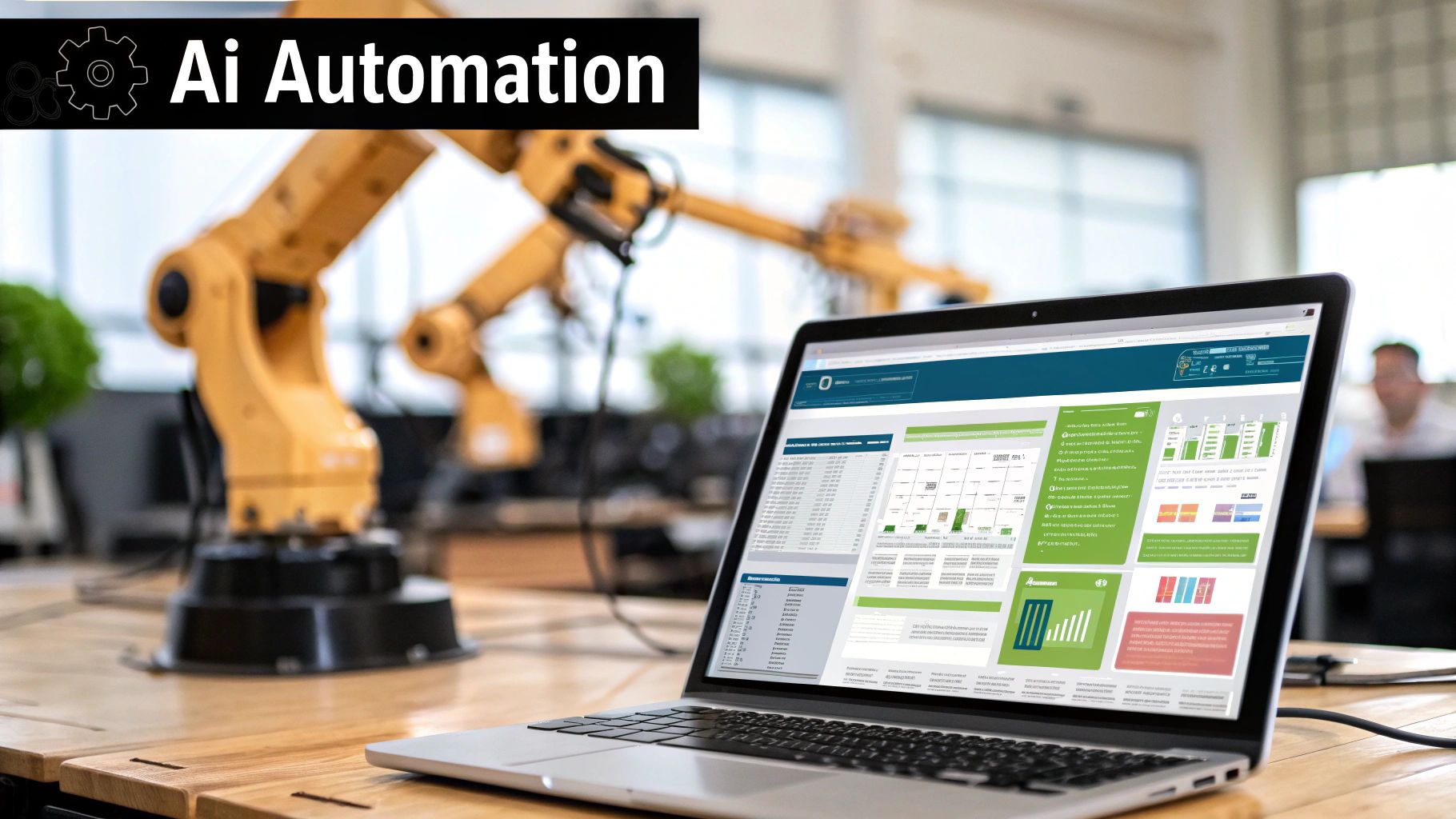
This process involves more than just sending a survey after a ticket is closed. It requires a systematic approach to gathering, analyzing, and acting upon user input to drive tangible service improvements. By integrating feedback into your operations, you can identify hidden pain points, discover opportunities for innovation, and demonstrate a commitment to user satisfaction that builds trust and loyalty.
Why User Feedback is a Top Service Desk Practice
Basing decisions on user feedback ensures that improvements are relevant and impactful. For instance, a leading e-commerce company noticed low satisfaction scores related to its internal password reset process. By analyzing user comments, they discovered the multi-step verification was overly complex. A simplified, two-factor authentication process was implemented, resulting in a 60% reduction in related support tickets and a significant boost in user satisfaction. This illustrates how direct feedback can pinpoint specific issues and guide effective solutions. Understanding and responding to customer needs is vital for service desk excellence. To further refine your approach, explore effective methods for gathering customer feedback to ensure your strategy is comprehensive.
Actionable Implementation Tips
To make feedback a cornerstone of your service desk best practices, you need a structured approach.
- Use Multiple Channels: Don’t rely on a single method. Combine post-incident surveys, regular user satisfaction (CSAT) polls, suggestion boxes, and user forums to gather diverse insights.
- Close the Feedback Loop: When you implement a change based on user suggestions, communicate it back to them. This shows users their voice is heard and valued, encouraging future participation.
- Analyze for Trends: Look beyond individual comments to identify recurring themes and patterns. Use this data to prioritize improvements that will have the broadest positive impact.
- Empower Agents to Act: Train your service desk agents to not only resolve issues but also to be active listeners who can capture and escalate valuable feedback during their interactions.
Service Desk Best Practices Comparison
| Item | Implementation Complexity 🔄 | Resource Requirements ⚡ | Expected Outcomes 📊 | Ideal Use Cases 💡 | Key Advantages ⭐ |
|---|---|---|---|---|---|
| Implement ITIL Framework | High – complex, time-consuming | Significant – training, certification | Improved service quality, customer satisfaction | Organizations seeking standardized ITSM | Industry best practices, measurable improvements |
| Establish Clear SLAs | Medium – design and monitoring needed | Moderate – monitoring and reporting | Clear expectations, accountability, transparency | Formalizing service commitments | Measurable targets, legal protection |
| Create and Maintain Knowledge Base | Medium – setup and governance critical | Moderate – content creation and updates | Faster resolution, consistent info, self-service | Support teams needing quick info access | Reduced handle times, institutional knowledge |
| Multi-Channel Support Strategy | High – channel integration complexity | High – infrastructure, licensing | Enhanced satisfaction, multiple contact options | Customer-driven organizations with diverse needs | Increased convenience and competitive edge |
| Ticket Prioritization & Categorization | Medium – requires tuning and automation | Moderate – system setup and maintenance | Efficient resource use, SLA compliance | Organizations managing varied ticket volumes | Fast response to critical issues, clear workflows |
| Focus on First Call Resolution (FCR) | Medium – training and tool investment | Moderate – agent enablement and monitoring | Higher satisfaction, reduced costs | High-volume support centers prioritizing efficiency | Lower call volumes, improved agent morale |
| Robust Monitoring and Reporting | Medium – requires analytics setup | Moderate to High – tools and skills | Data-driven decisions, proactive management | Continuous improvement and performance tracking | Clear performance visibility, ROI demonstration |
| Continuous Training and Development | Medium – ongoing commitment | High – time and cost investment | Better service quality, employee engagement | Service desks emphasizing skill growth | Improved adaptability and retention |
| Leverage Automation and AI | High – technical expertise needed | High – implementation and maintenance | Faster responses, cost reduction | Organizations seeking efficiency and scalability | 24/7 support, consistent service delivery |
Putting It All Together: Your Roadmap to Service Desk Excellence
We have journeyed through a comprehensive collection of service desk best practices, exploring everything from foundational frameworks to cutting-edge technologies. The path to transforming your service desk from a simple support function into a strategic business enabler is not a single leap but a series of deliberate, well-executed steps. Adopting these principles is an ongoing commitment to continuous improvement, operational efficiency, and, most importantly, unparalleled user satisfaction.
Let’s distill the core themes we’ve covered. The journey begins with structure and clarity. Implementing a framework like ITIL provides a standardized vocabulary and process architecture, while clearly defined Service Level Agreements (SLAs) manage user expectations and set a benchmark for performance. These foundational elements prevent operational chaos and establish a baseline for quality.
Building upon this foundation, knowledge becomes your most powerful asset. A comprehensive and meticulously maintained knowledge base empowers both your users and your agents. It fosters self-service, reduces ticket volume for common issues, and ensures that institutional wisdom is captured and shared, rather than lost to employee turnover. This proactive approach is a cornerstone of efficient service delivery.
From Reactive to Proactive: Evolving Your Service Strategy
A truly modern service desk must meet users where they are. This means embracing a multi-channel support strategy, offering assistance via email, chat, phone, and self-service portals. In our increasingly globalized world, this also means speaking their language. Integrating tools that offer instant, seamless translation directly within your ticketing system is no longer a luxury but a competitive necessity for any organization with a diverse user base. This single capability can dismantle communication barriers, centralize global support, and dramatically improve the user experience.
To manage this influx of requests effectively, systematic processes are essential. Implementing robust ticket prioritization and categorization ensures that critical issues receive immediate attention, while a steadfast focus on First Call Resolution (FCR) directly impacts user satisfaction and agent efficiency. Remember, every ticket resolved on the first interaction is a win for both the user and your team’s capacity.
The Force Multipliers: Technology and People
The final, and perhaps most transformative, layer involves leveraging force multipliers: technology and your team. Automation and AI are not here to replace agents but to augment their capabilities. By automating repetitive tasks like ticket routing, password resets, and status updates, you free up your skilled technicians to focus on complex, high-value problem-solving.
However, even the most advanced tools are ineffective without a well-trained, motivated team. Continuous training and professional development are non-negotiable service desk best practices. Investing in your people ensures they are equipped with the technical skills and the soft skills needed to handle any situation with empathy and expertise. This commitment, combined with robust monitoring and reporting, creates a virtuous cycle of improvement. By tracking the right metrics, you gain the insights needed to refine processes, identify training gaps, and demonstrate the tangible business value your service desk delivers.
Ultimately, achieving service desk excellence is a marathon, not a sprint. The key is to view these best practices not as a rigid checklist but as a flexible roadmap. Start by assessing your current state, identify one or two areas for immediate improvement, and build momentum from there. Celebrate small wins, solicit constant feedback, and never stop iterating. By embracing this philosophy, you will build a resilient, user-centric service desk that not only solves problems but actively drives business success.
Ready to break down language barriers and implement a key global service desk best practice? Discover how Issue Translation for Jira Service Management by resolution Reichert Network Solutions GmbH can help your team provide seamless, multilingual support from a single, centralized help center. Empower your agents and delight your international users today.
